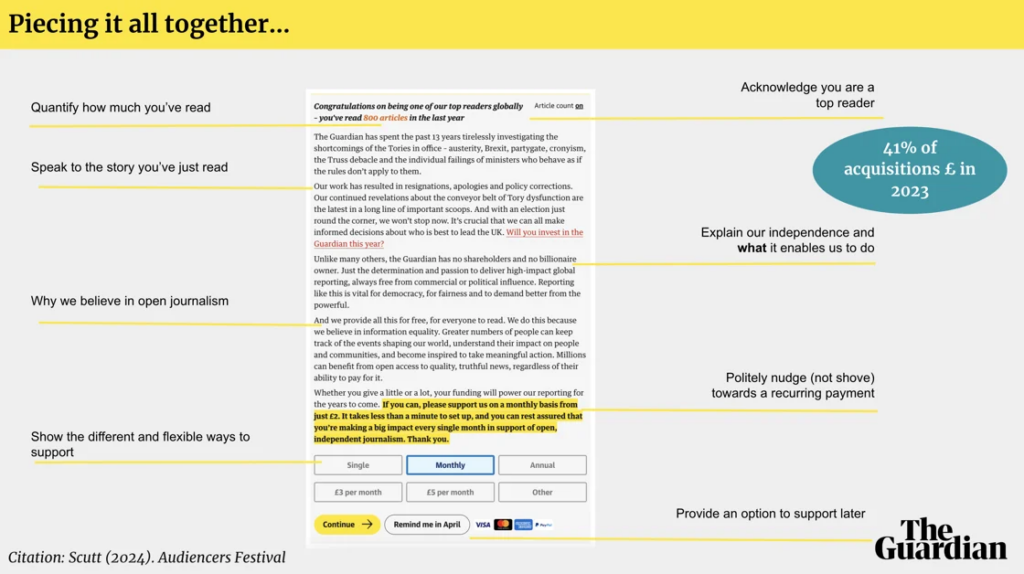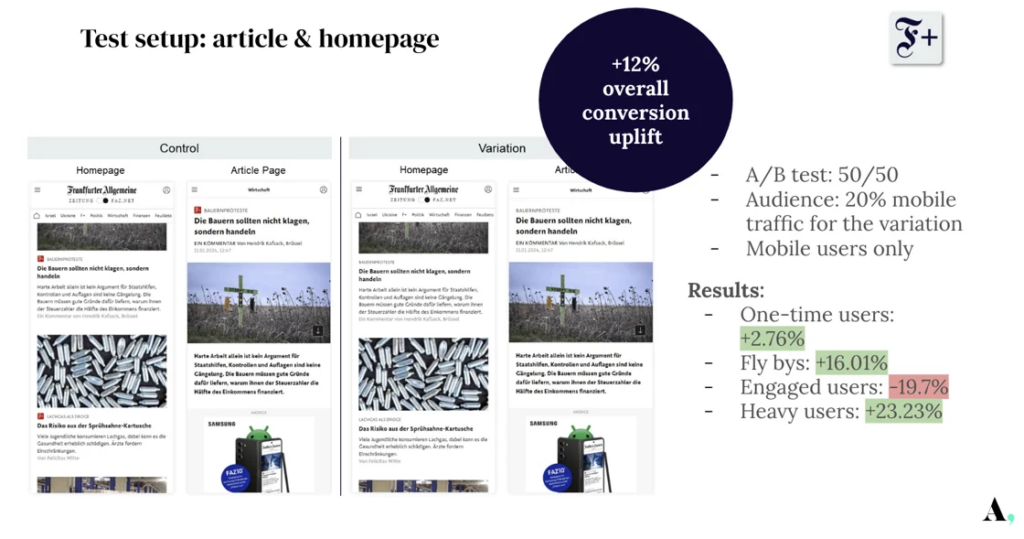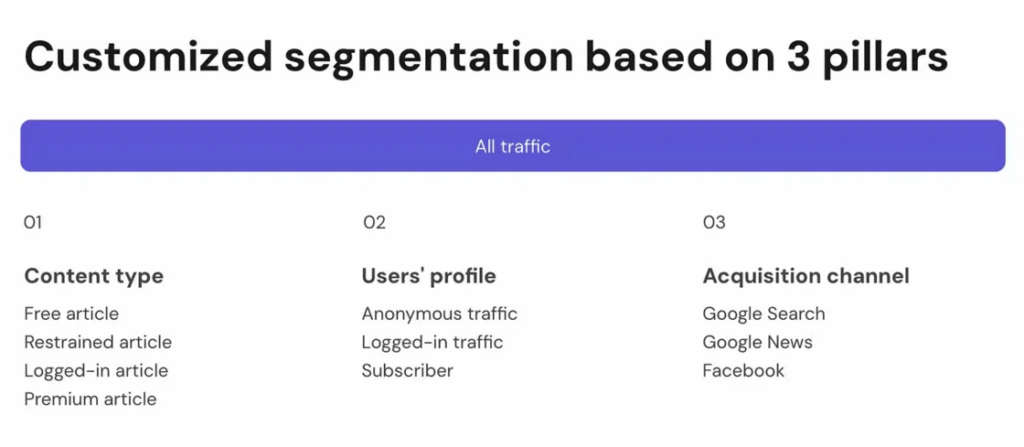

You're reading The Audiencers' newsletter #41, sent out on June 26th, 2024. To receive future newsletters straight to your inbox every two weeks, sign up here.
An ode to Audiencers
It’s an incredible thing to build a community.
It’s even more incredible to see it come to life.
Which is perhaps what makes us enjoy our Festivals so much, and why doing one led to us organizing 7. Because being in a room full of Audiencers, you all, who are facing similar challenges, who are open to sharing their experiences, who get as excited about the industry as we do, is an immense joy.
It’s a space that I don’t think existed before, a space solely for audience people. But ultimately, it’s also a space by audience people. Because without your openness, your innovative solutions to these challenges, your enthusiasm for the future of journalism, this community couldn’t exist.
So this newsletter is dedicated to you, as an Audiencer, so that we continue to celebrate your work, be solution-first and fuel this community so that many more Festivals and Workshops can continue into the future!
In this newsletter, from last week’s events in London:
- 🇬🇧 How The Guardian uses messaging to ask for reader support
- 🇩🇪 Testing premium content visibility at Germany’s FAZ
- 🇦🇷 5 essentials to Clarin’s digital transformation success
- 🇨🇦 A freemium base, with dynamicity on top: Les Coops de l’info’s audience-first subscription model

How The Guardian uses messaging to ask for reader support
Traditionally reserved for advertising, the end of an article is perhaps the most lucrative real estate, and a place that The Guardian has really made their own.
Today, the famous Guardian ‘Epic’ is their primary acquisition channel.

What makes these Epics such a success?
> Powerful copy that translates supporter motivations, leans into the news cycle, speaks to events and sometimes plays around with some tongue and cheek

> The innovative article count feature, a form of ‘fitbit for news’
> Integrating payment flow into the Epic
> Testing pricing strategies – optimize for recurring revenues via choice, gently pushing people where you want them to go
> ‘Remind me later’ emails – over half of one-time contributors said they were willing to be reminded to give again in the future, under certain conditions
Find the full presentation from The Guardian’s panel on The Audiencers.
5 essentials to Clarin’s digital transformation success
Ismael Nafria Mitjans, journalist, consultant, professor and author of 2 books, including one detailing the Argentinian publisher, Clarin’s, digital transformation, shared 5 of the key elements to their success.
Some of the strategies that stood out in particular:
> Launching registration 2 years before their digital subscription offer – this proved the value of their most loyal readers and “had a major impact on the reorganization of Clarín’s editorial work”
> Collaborating with their main rival, La Nación, “considering it a strategic move for the future of the sector”
> Splitting the editorial team into 4 groups based on revenue goals, with 3 being focused on subscription KPIs (acquisition & retention) and 1 on reaching large audiences (advertising, new users & relevance)
> Defining what article features help a reader make the decision to subscribe – a very interesting journalistic concept, internally named “the decisive note”.
Read more about this ‘decisive note’ concept on The Audiencers
Germany’s FAZ: testing premium content visibility
Launched in 2018, Frankfurter Allgemeine Zeitung’s digital paid offer allows access to over 1000 articles online, prioritizing easy entry and easy exit.
And, partly in thanks to their dynamic paywall model and continuous testing (Donika, head of paid content subscription, shared that they run 50+ tests a year in her team), the publication has gone from 0 to 135k paid digital subs in 6 years!
One of the most important tests that Donika discussed at our Festival was the visibility of premium content. Questions such as: should you use a premium icon to mark paid-for content? How many premium articles should you include on the home page?
The hypothesis:
“If we increase the number of paid articles on desktop and mobile, then we’ll generate more paid subscribers because the user sees more value on offer and it increases the buying pressure”
An example of a test run to answer this question:
Should we have premium icons highlighting articles reserved for subscribers only? Well for FAZ, removing icons led to 12% overall conversion uplift!

Dive deeper into this topic:
- Paywall visibility rate: the essential KPI you should be tracking
- Paywalled content: rethink your premium icons
A freemium base, with dynamicity on top: Les Coops de l’info’s audience-first subscription model
The popularity of freemium models, whereby content is split into free vs paid (blocked by a paywall), is clear in Europe, whilst the US has classically favored metered or hard models. But what’s emerging this year is a freemium base, with dynamicity on top.
Specifically, the experience a reader gets on paid-for content depends on their profile and context, such as their level of engagement, source of traffic, etc.
Canada’s Les Coops de L’information, who has gone through an incredible digital transformation journey since 2020, is doing exactly that.
“Our strategy is to divide traffic into 3 groups based on the content type, the user profile and acquisition channel. This allows us to target audiences with very adapted strategies that aim to increase engagement and frustrate them just the right amount to convert them to something that’s more valuable to our business, such as a newsletter subscriber, registered member or paying subscriber.”

Each segment is presented with an adapted journey with a different goal in mind.

But, of course, testing is essential. Marc Gendron, publisher of Le Soleil (part of the Les Coops de l’info group) shared at our Festival that “there’s a moment when you say: “It’s good enough” and you go live. And then, the real implementation process, through testing and learning, through optimizing and innovating, begins.”
“For instance, we tested a non-blocking wall that appears whenever an anonymous user arrives from a search engine. Instead of blocking with a paywall, we first ask them to subscribe to a newsletter in exchange for access to content with the goal of increasing engagement and allowing them to discover our title. The result: our newsletter mailing list grew by 26.3% in the first month, and 66% in the following three months. This enables us to develop a relationship with these users and, in the long term, increase chances of convincing them to subscribe.”
> Marc and I spoke on a webinar with FIPP a few weeks back about this topic. You can read the summary here.
Content to add to your reading list:
- Dopamine & the Hook model: how The New York Times harnesses the power of games
- How The Bristol Cable raised membership revenue by 25 per cent in a year
- Understanding subscriber loyalty and churn risk: inside Hearst US’ innovative scoring system
- Five audience growth and revenue strategies from outside the UK
The Audiencers’ newsletter: from professionals to professionals
Sign up to our newsletter – real-life examples, expert points of view and inspirations from publishers around the world to help you do your job better. Sent every two weeks.


